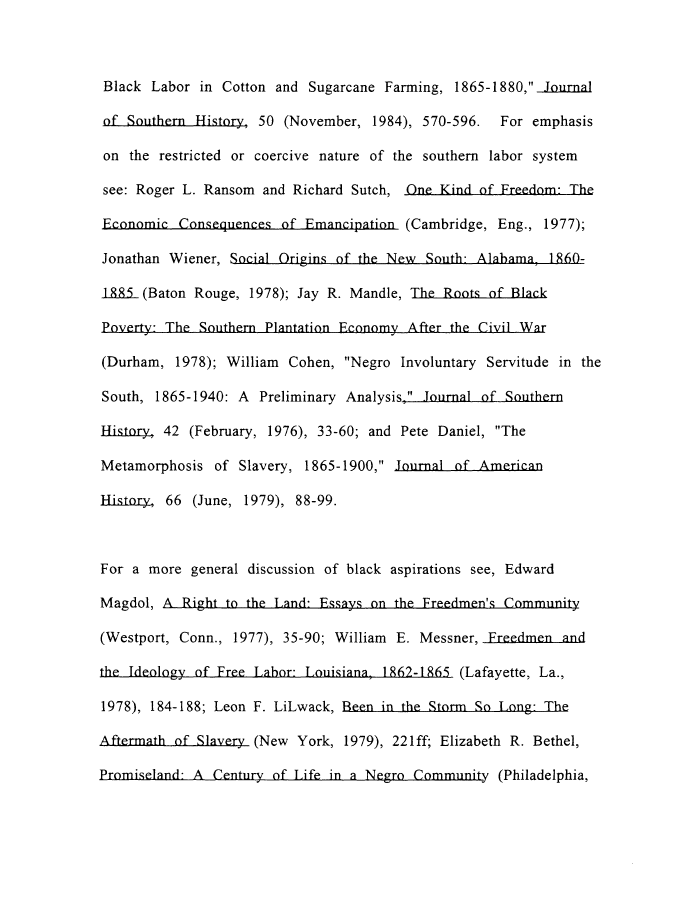 |
||||
|
TASK FORCE TO STUDY THE HISTORY AND LEGACY OF SLAVERY IN MARYLAND (Final Report) 1999/12/31 MdHR 991422 MdHR 991422, Image No: 310 Print image (41K) |
 |
||||
|
TASK FORCE TO STUDY THE HISTORY AND LEGACY OF SLAVERY IN MARYLAND (Final Report) 1999/12/31 MdHR 991422 MdHR 991422, Image No: 310 Print image (41K) |
| Black Labor in Cotton and Sugarcane Farming, 1865-1880," Journal of Southern History3 50 (November, 1984), 570-596. For emphasis on the restricted or coercive nature of the southern labor system see: Roger L. Ransom and Richard Sutch, One Kind of Freedom: The Economic Consequences of Emancipation (Cambridge, Eng., 1977); Jonathan Wiener, Social Origins of the New South: Alabamaj 1860-1&&5_ (Baton Rouge, 1978); Jay R. Mandle, The Roots of Black Poverty: The Southern Plantation Economy After the Civil War (Durham, 1978); William Cohen, "Negro Involuntary Servitude in the South, 1865-1940: A Preliminary Analysis/' Journal of Southern History, 42 (February, 1976), 33-60; and Pete Daniel, "The Metamorphosis of Slavery, 1865-1900," Journal of American History, 66 (June, 1979), 88-99. For a more general discussion of black aspirations see, Edward Magdol, A Right to the Land: Essays on the Freerimen's Community (Westport, Conn., 1977), 35-90; William E. Messner3 Freedmen and the Ideology of Free Labor: Louisiana^ 1862-1865 (Lafayette, La., 1978), 184-188; Leon F. LiLwack, Been in the Storm So T.ong: The Aftermath of Slavery (New York, 1979), 22Iff; Elizabeth R. Bethel, Prnmiseland: A Century of Life in a Negro Community (Philadelphia, |